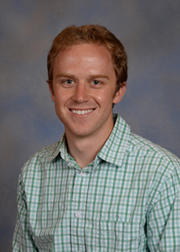Network Design for Quantifying Urban CO2 Emissions: Assessing Trade-offs Between Precision and Network Density
Alexander Turner, Harvard University

The majority of anthropogenic CO2 emissions are attributable to urban areas. While emissions from urban electricity generation often occur in locations remote from consumption, many other emissions occur within the city limits. Evaluating the effectiveness of strategies for controlling these discharges depends on our ability to observe urban CO2 emissions and attribute them to specific activities. Cost-effective strategies for doing so have yet to be described. Here we characterize the ability of a prototype measurement network, modeled after the BEACO2N network, in combination with an inverse model based on WRF-STILT to improve our understanding of urban emissions. The pseudo-measurement network includes 34 sites at roughly 2-km spacing covering an area of roughly 400 km^2. The model uses an hourly 1x1 km^2 emission inventory and 1x1 km^2 meteorological calculations. We perform an ensemble of Bayesian atmospheric inversions to sample the combined effects of uncertainties of the pseudo-measurements and the model. We vary the estimates of the combined uncertainty of the pseudo-observations and model over a range of 20 ppm to 0.005 ppm and vary the number of sites from one to 34. We use these inversions to develop statistical models that estimate the efficacy of the combined model-observing system at reducing uncertainty in CO2 emissions. We examine uncertainty in estimated CO2 fluxes at the urban scale as well as for sources embedded within the city, such as a line source (e.g., a highway) or a point source (e.g., emissions from the stacks of small industrial facilities). We find that a dense network with moderate precision is the preferred setup for estimating area, line and point sources from a combined uncertainty and cost perspective. The dense network considered here could estimate weekly CO2 emissions from an urban region with less than 5 percent error, given our characterization of the combined observation and model uncertainty.
Abstract Author(s): A.J. Turner, A.A. Shusterman, B.C. McDonald, V. Teige, R.A. Harley, R.C. Cohen


